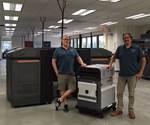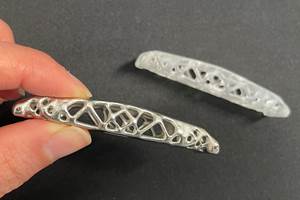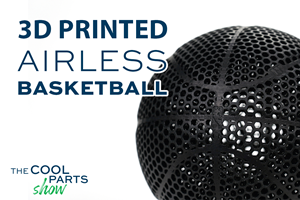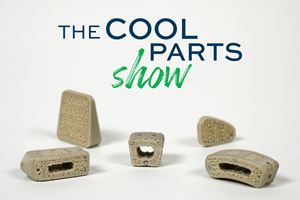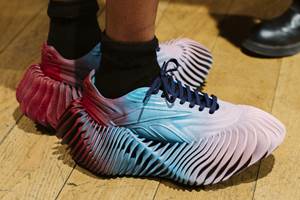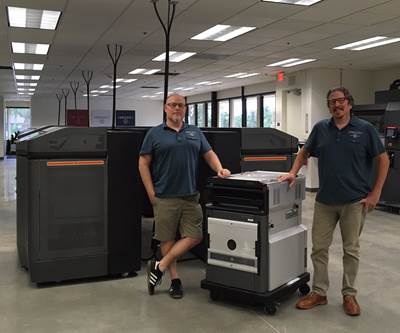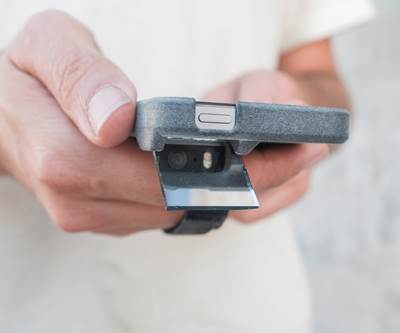Video: 3D Printing Is a Complement and Competitor to Injection Molding
Ken Burns of Forecast 3D, an early adopter of HP Multi Jet Fusion, sees 3D printing as both a complement and a competitor to injection molding. He shares why in this interview.
Is 3D printing a complement or a competitor to injection molding? For contract manufacturer Forecast 3D, it is both. As an early adopter of Multi Jet Fusion technology from HP, Forecast 3D believes it has found a 3D printing technology capable of competing with injection molding in the right applications and quantities. But, that doesn’t mean that 3D printing is always the best or only answer for production.
Ken Burns, technical sales director for Forecast 3D, shares his perspective with this interview, filmed during NPE2018. Watch below or read on for the transcript.
Transcript
Stephanie Hendrixson, Additive Manufacturing
I'm Stephanie Hendrixson with Additive Manufacturing. I'm here with Ken Burns, technical sales director at Forecast 3D. Ken, tell us a little bit about your company.
Ken Burns, Forecast 3D
Sure. So, Forecast 3D's been around since 1994. We've historically focused a lot in the prototyping markets, and some short-run production with some of our traditional services like cast urethane. Today we really define ourselves as a prototyping and a production house focused on the 3D printing opportunities out there.
Stephanie Hendrixson
And so one of the 3D printing technologies that you use is HP's Multi Jet Fusion. Why did Forecast choose to invest in this technology?
Ken Burns
For the first time, out of any 3D printing technology, we believe the HP technology could actually handle large volumes. The material properties, being more isotropic, have the ability to compete with injection molding materials out there, and the throughput of the systems can actually produce at volumes that allow you to go beyond the prototyping level.
Stephanie Hendrixson
You mentioned production as your focus for this technology. What kinds of quantities are we talking?
Ken Burns
We see most of our customers today are in the low thousands for production applications, although we do have a handful of customers that are doing tens of thousands of parts this year, and we'll have probably one or two customers that will produce over a million parts this year.
One of the applications that we've found is a really good fit are some of the industrial applications—think internal components on equipment. A second application that we've had a lot of success in is mass customization. That's what 3D printing's great for, and the throughput of the HP technology has allowed us to do that. So there's one customer specifically, Wiivv, they make custom insoles for orthotics and they also have a new product, a sandal, that has a custom orthotic on it. And then the other one is kind of in that low quantity point—so, hey, I'm going to make a thousand of these. I can go straight into production. I don't need to do anything else. Let's just produce.
Stephanie Hendrixson
Given all that you've learned about this system and the ways that you're using it, do you think that 3D printing is a complement or a competitor to injection molding?
Ken Burns
I actually would say it's both. Yes, it's going to take some opportunities away from injection molding, but at the end of the day, it's probably going to create a better market overall for whoever the end-use customer is. I honestly believe that it just means growing the market in both those opportunities. It's better solidifying where injection molding has its place, and where 3D printing has its place for the larger volumes.
Stephanie Hendrixson
Ken, thank you for joining me and talking a little more about Forecast 3D, and what you've learned about 3D printing for production as well as prototyping.
Ken Burns
You bet. Always a pleasure.
Related Content
Possibilities From Electroplating 3D Printed Plastic Parts
Adding layers of nickel or copper to 3D printed polymer can impart desired properties such as electrical conductivity, EMI shielding, abrasion resistance and improved strength — approaching and even exceeding 3D printed metal, according to RePliForm.
Read MoreAirless Basketball Shows Promise of 3D Printed Lattices: The Cool Parts Show Bonus
Successfully matching the performance of a standard basketball demonstrates the control possible over the mechanical properties of digital materials.
Read MoreFDA-Approved Spine Implant Made with PEEK: The Cool Parts Show #63
Curiteva now manufactures these cervical spine implants using an unusual 3D printing method: fused strand deposition. Learn how the process works and why it’s a good pairing with PEEK in this episode of The Cool Parts Show.
Read MoreConcept Sneaker Boasts One-Piece 3D Printed TPU Construction
The Reebok x Botter Concept Sneaker Engineered by HP premiered at Paris Fashion Week, hinting at manufacturing possibilities for the future of footwear.
Read MoreRead Next
How Forecast 3D Is Taking 3D Printing into Mass Production
Forecast 3D got its start building silicone molds from 3D-printed master patterns. Now, through the use of Multi Jet Fusion, the company sees a future in manufacturing large quantities of 3D-printed parts.
Read MoreNiche Manufacturer Discovers How Additive and Amazon Go Together
The economics of 3D printing allow for cost-effective production of niche products, and Amazon Prime offers a way to distribute them. The Periscope Case is one company’s first venture into an all-new model aimed at bringing products to market that would never have been profitable before.
Read MoreProfilometry-Based Indentation Plastometry (PIP) as an Alternative to Standard Tensile Testing
UK-based Plastometrex offers a benchtop testing device utilizing PIP to quickly and easily analyze the yield strength, tensile strength and uniform elongation of samples and even printed parts. The solution is particularly useful for additive manufacturing.
Read More
.jpg;width=70;height=70;mode=crop)
